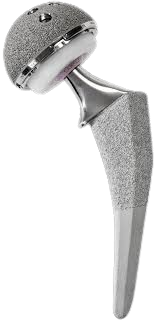Anterior Total Hip Replacement
Anterior Total Hip Replacement
The hip is a primary weight bearing joint in the body that plays an important role in a person’s daily function. It is often referred to as a ball and socket joint. Over time, one or both hips may develop a degenerative condition called osteoarthritis, which can result in pain and stiffness in the hips. With modern technology, patient’s can reduce their pain and improve their function with a minimally invasive total hip replacement.


Can the robotic or computer assistance be used on my hip replacement?
Yes, it can. The use of robotic or computer assistance adds an additional level of accuracy and precision to the procedure to ensure appropriate positioning of components.
You may be a candidate for a hip replacement if you have pain and dysfunction resulting from osteoarthritis that is refractory to conservative treatments. Dr Scott performs both a standard posterior hip replacement through a minimally invasive approach as well as a direct anterior hip replacement. The anterior hip replacement has certain advantages due to the fact that no muscles or tendons are cut during the surgery, which can lead to a slightly faster early recovery. Additionally the anterior hip replacement uses XR or robotic assistance to help ensure appropriate positioning of the components and restoration of the patient’s leg lengths.
Discuss with Dr Scott if you may be a candidate for an anterior hip replacement.
How long is the operation?
Approximately 2 hours.
What are the components made of?
Hip replacements consist of multiple parts – the acetabular component or shell is made of titanium which accommodates an inner liner made of highly cross-linked polyethylene. The femoral stem is made of titanium and can accommodate different sized ceramic heads. There is no metal on metal components as existed in previous designs.
Will I have any hip precautions?
Patients undergoing direct anterior hip replacement surgery do not have any precautions following recovery from surgery. Patient’s undergoing the more traditional posterior based hip replacements require hip dislocation precautions to ensure the stability of the hip.
